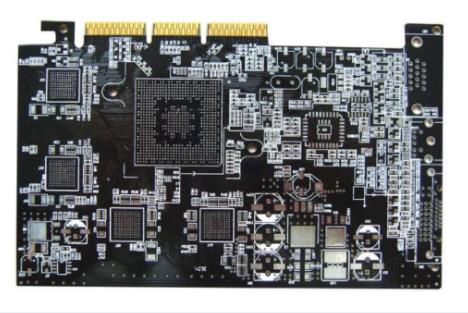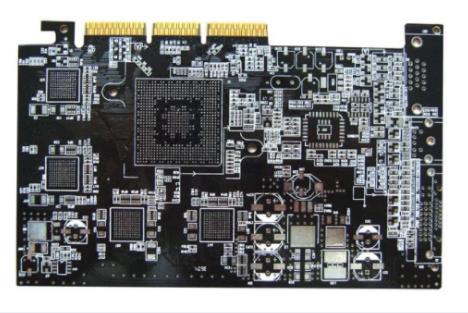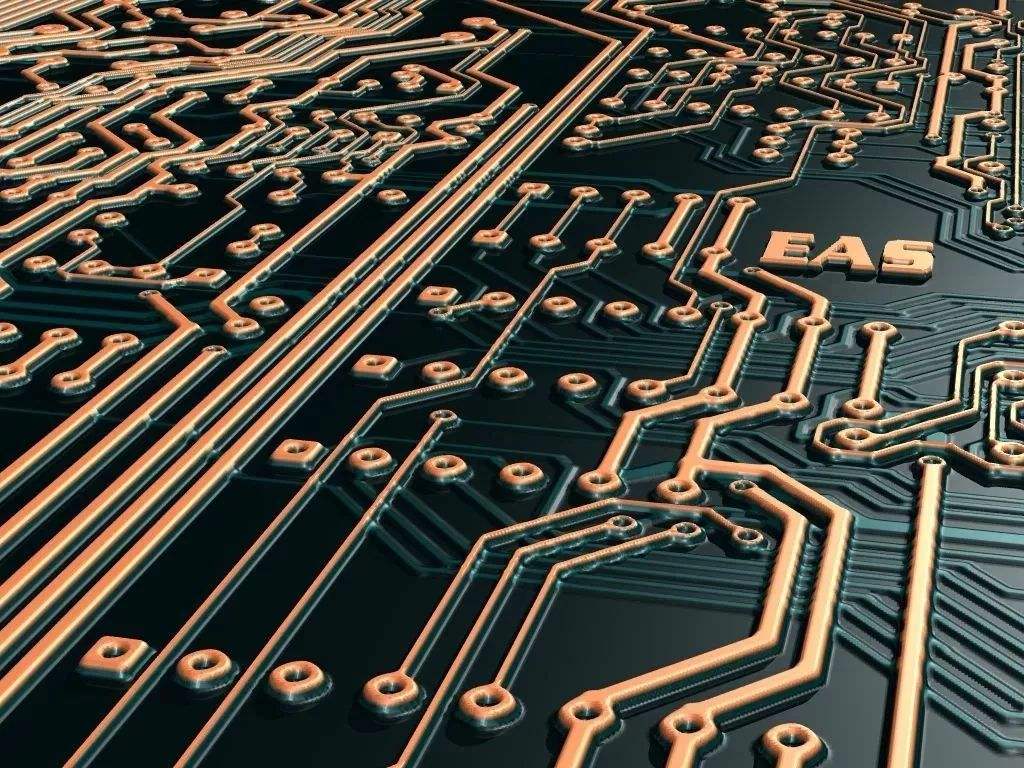
PCB board appearance and function test terminology
1.1 Production board
Any PCBmeets the design drawings, relevant specifications, and procurement requirements, and is produced in one production batch
1.2 Upon receipt
The products submitted for acceptance have not undergone any conditioning treatment and are in the mechanical test state under normal atmospheric conditions.
1.3 Test plate
Printed boards are produced by the same process to determine the acceptability of a batch of printed boards. It represents the quality of a batch of printed boards
1.4 Test mode
The conductive pattern is used to complete the test. The pattern can be a part of the conductive pattern on the production board or a special test pattern specially designed. This test mode can be placed on the connected test board. The liquid can be placed on a separate test plate
1.5 Composite test mode
Combination of two or more different test modes, usually placed on the test board
1.6 Quality conformance test circuit
The build includes a complete set of test modes to determine the acceptability of the print board quality in the build
1.7 Specimen connection test plate
A drawing of a part of a quality conformance test circuit used for a specified acceptance test or a set of related tests
1.8 Storage life
PCB board
2. External dimensions
2.1 Visual inspection
Examine physical features with naked eyes or under specified magnification
2.2 Bubbles
The local separation phenomenon is caused by the local expansion between the layers of the substrate or between the substrate and the conductive foil, or between the substrate and the protective coating, which is a form of delamination
2.3 Porosity
Vent hole
2.4 Projection
Collision on printed board or foil surface due to internal delamination or separation of fiber and resin
2.5 Circumferential separation
Cracks or voids. It exists in the coating around the electroplated through-hole, the solder joint around the lead, the solder joint around the blind rivet or the interface between the solder joint and the bonding pad
2.6 Cracking
Fracture in metallic or non-metallic layers may extend to the bottom.
2.7 Cracking
There is a phenomenon in the substrate that the glass fiber is separated from the resin at the fabric interweave. It is shown as white dots or crosses connected under the surface of the substrate, usually related to mechanical stress
2.8 Measurement
The phenomenon that occurs inside the substrate, in which the fabric is interwoven with each other and the glass fiber and resin are separated, which is shown as scattered white spots or cross patterns under the surface of the substrate, usually related to thermal stress.
2.9 Conformal coating cracking
Micro cracks appear on the surface and inside of conformal coating
2.10 Layering
The phenomenon of interlayer of insulating substrate, insulating substrate and conductive foil, or interlayer separation in multilayer board

2.11 Dents
Smooth depressions on the conductive foil surface do not significantly reduce its thickness
2.12 Female copper
Excess copper left on the substrate after chemical treatment
2.13 Fiber exposure
Reinforcing fibers exposed to the substrate due to machining or abrasion or chemical attack
2.14 Weaving exposure
A condition on the surface of the substrate in which the unbroken woven glass fibers in the substrate are not completely covered by resin
2.15 Woven texture
A state on the surface of the substrate, that is, the fiber of the woven glass cloth in the substrate is not broken and is completely covered by resin, but the woven pattern of the glass cloth is displayed on the surface
2.16 Fold
Creases or folds on the foil surface
2.17 Halo dyeing
Damage or delamination occurs on or below the substrate surface due to machining. It usually appears as white area around the hole or other processing area
2.18 Opening
The phenomenon that the connecting plate does not completely enclose the hole
2.19 Flare
In punching engineering, a tapered hole is formed on the base plate on the exit face of the punch
2.20 Spalling
Rotary drill, used to drill eccentric, out of round or out of vertical holes
2.21 Invalid
Local lack of material
2.22 Holes
Expose holes in the substrate in metallization of plated through holes
2.23 Including
Foreign particles trapped in the substrate, wire layer, coating or solder joint
2.24 Land upgrading
Whether the resin is lifted from the pad or not, the pad will be lifted or separated from the substrate
2.25 Head
The phenomenon that the copper foil on the inner conductor is stretched along the hole wall due to the drilling in the multilayer board
2.26 Nick
2.27 Nodes
Irregular lumps or nodules protruding from the coating surface
2.28 Pinholes
Holes that completely penetrate the metal layer
2.30 Resin Decay
From the microsection of the electroplated through-hole of the printed board after high temperature, it can be seen that the cavity between the electroplated through-hole wall and the drilling wall
2.31 Scratches
2.32 Ventilation
The protrusion on the conductive foil surface
2.33 Conductor thickness
2.34 Minimum ring
2.35 Registration
The position of graphics, holes or other features on the printed board is consistent with the specified position
2.36 Thickness of base material
2.37 Metal coating thickness
2.38 Areas with insufficient resin
The part of the laminate that cannot fully penetrate the reinforced material due to insufficient resin. Its luster is poor, and the surface is not completely covered by resin or exposed by fibers
2.39 Resin enrichment area
The part of the laminate surface in which the resin is significantly thickened and not reinforced, i.e., the area with resin but not reinforced
2.40 Gel particles
Solidified, usually translucent particles in laminates
2.41 Treatment transfer
The phenomenon that the copper foil treatment layer (oxide) is transferred to the substrate. After etching the copper foil on the surface, the substrate surface will leave black, brown or red traces.
2.42 Thickness of printed board
Total thickness of substrate and conductive materials (including coating) covered on the substrate
2.43 Total thickness of plate
Thickness of printed board, including electroplating layer, electroplated coating and other coatings forming an integral part with the printed board
2.44 Rectangle
Offset of rectangular plate angle from 90 degrees
3. Power efficiency
3.1 Contact resistance
Resistance of contact interface withstand surface measured under specified conditions
3.2 Surface resistance
The quotient of the DC voltage between two electrodes on the same surface of the insulator divided by the steady-state surface current generated between two electrodes
3.3 Surface resistivity
The quotient of the DC electric field strength on the insulator surface divided by the current density
3.4 Volume resistance
The quotient is obtained by dividing the DC voltage applied between two electrodes on the opposite surface of the sample by the steady-state surface current formed between the two electrodes
3.5 Volume resistivity
The quotient of the DC electric field strength in the sample divided by the steady state current density
3.6 Dielectric constant
The ratio of capacitance to capacitance obtained by filling dielectric between electrodes of specified shape when the same electrode is in vacuum
3.7 Dielectric loss factor
When a sine wave voltage is applied to a dielectric, the complementary angle of the phase angle between the current phasor passing through the dielectric and the voltage phasor is called the loss angle. The tangent of the loss angle is called the loss factor
3.8 Q factor
A quantity used to evaluate the electrical properties of a dielectric. Its value is equal to the reciprocal of the dielectric loss factor
3.9 Dielectric strength
The voltage that the insulating material can withstand before breakdown of each tissue thickness
3.10 Dielectric breakdown
The phenomenon that insulating materials completely lose their insulating effectiveness under the action of electric field
3.11 Comparison tracking index
Under the combined action of electric field and electrolyte, the surface of insulating material can withstand 50 drops of electrolyte without forming electric traces.
3.12 Arc resistance
The ability of insulating material to withstand the action of electric arc along its surface under specified test conditions. Generally, the time required for the arc to cause carbonization on the data surface until the surface conducts electricity
3.13 Dielectric withstand voltage
The voltage that the insulator can withstand without damaging the insulation and conducting current
3.14 Surface corrosion test
Test to determine whether electrolytic corrosion exists in the etched conductive pattern under polarization voltage and high humidity conditions
3.15 Edge electrolytic corrosion test
Test to determine whether the substrate will cause corrosion of metal parts in contact with it under polarization voltage and high humidity conditions
4. Non electric characteristics
4.1 Bond strength
The tissue area force perpendicular to the surface of the printed board or laminate is used to separate adjacent layers of the printed board or laminate
4.2 Pull off strength
The force required to separate the pad from the substrate when a load or tension is applied axially
4.3 Pullout strength
When tension or load is applied axially, the force required to separate the metal layer of electroplated through-hole from the substrate
6.4.5 Peel strength
The force perpendicular to the board surface is required to peel the metal wire or metal foil with tissue width from the foil clad board or printed board
6.4.6 Bow
Deformation of laminate or printed board on the plane. It can be roughly expressed as the curvature of a cylinder or sphere. If it is a rectangular plate, its four corners are in the same plane when bending
4.7 Torsion
Deformation of rectangular plate plane. One of its corners is not in the plane containing the other three corners
4.8 Camber angle
Deviation of flexible board or flat cable plane from straight line
4.9 Coefficient of thermal expansion (CTE)
Linear change of data size with tissue temperature change
4.10 Thermal conductivity
Tissue time and tissue temperature gradient, heat vertically flowing through tissue area and tissue distance
4.11 Dimensional stability
Measurement of dimensional changes caused by factors such as temperature, humidity, chemical treatment, aging or stress
4.12 Weldability
Ability of metal surface to be wetted by molten solder
4.13 Wetting
The molten solder is coated on the base hole metal to form a fairly uniform, smooth and continuous solder film
4.14 Dehumidification
After the molten solder covers the surface of the base metal, the solder shrinks, leaving irregular solder joints, but the base metal is not exposed
4.15 Novotel
The phenomenon that the molten solder contacts the metal surface and only partially adheres to the surface, exposing the base metal
4.16 Ionizable pollutants
Residues during processing can form polar compounds, which can be dissolved in water as free ions, such as flux, fingerprint, etching solution or electroplating solution. When these contaminants are dissolved in water, the resistivity of the water decreases.
4.17 Microsection
The method of preparing samples in advance for gold image examination of data. It is usually made by cutting profiles, then filling glue, grinding, polishing, etching, dyeing and other methods.
4.18 Electroplated through-hole structure test
After dissolving the printed board substrate, visually inspect the wire and electroplated through-hole
4.19 Floating weld test
Float the sample on the surface of molten solder for a specified time at a specified temperature to test the ability of the sample to withstand thermal shock and high temperature
4.20 Machinability
The ability of the foil clad laminate to withstand drilling, sawing, punching, shearing and other mechanical processing without fracture, breakage or other damage
4.21 Heat resistance
The ability of a foil clad sample to be placed in an oven at a specified temperature for a specified period of time without blistering
4.22 Thermal Strength Retention
Percentage of laminate strength in thermal state to its strength in normal state
4.23 Bending strength
The stress that the data can bear when reaching the specified deflection or fracture under bending load
4.24 Tensile strength
The tensile stress that can be borne when the tensile load is applied to the sample under the specified test conditions
4.25 Elongation
When the specimen breaks under tensile load, the ratio of the distance increment between the marked lines of the effective part of the specimen and the distance between the initial marked lines
4.26 Tensile modulus of elasticity
The ratio of the tensile stress borne by the data to the corresponding strain generated by the data within the elastic limit
4.27 Shear strength
The tissue area stress when the data are fractured under shear stress
4.28 Tear Strength
The force required to divide the plastic film into two parts. The sample without slit is called initial tear strength, and the sample with slit is called expanded tear strength
4.29 Cold flow
Deformation of non rigid data under continuous load within the working range
4.30 Flammability
The ability of data to burn under specified test conditions. In a broad sense, it includes the flammability and continuous combustion of data
4.31 Combustion
Luminous combustion of sample in gas phase
4.32 Burning
The sample will not burn, but the surface of the burning area can be shocked by visible light
4.33 Self extinguishing
Under the specified test conditions, the data will stop burning after the ignition source is removed
4.34 Oxygen index (OI)
Under the specified conditions, the sample needs oxygen concentration to maintain flame combustion in the oxygen nitrogen mixed flow. Express as the volume percentage of oxygen
4.35 Glass transition temperature
Temperature at which amorphous polymer changes from glassy brittle state to viscous fluid or high elastic state
4.36 Temperature index (TI)
Celsius value corresponding to a given time (usually 20000 hours) on the thermal life diagram of insulating materials
4.37 Fungal resistance
Data Fungus resistance
4.38 Chemical resistance
The tolerance of the data to the action of acid, alkali, salt, solvent, steam and other chemicals. It is expressed as the change degree of weight, size, appearance and other mechanical efficiency.
4.39 Differential scanning calorimetry
A technique for measuring the power difference between the input material and the reference as a function of the temperature at the programmed temperature
4.40 Thermomechanical analysis
Technology for measuring the temperature dependence of data deformation under non vibration load at the programmed temperature
5. Prepreg and adhesive film
5.1 Volatile components
The content of volatile substances in prepreg or coating film data is expressed as the percentage of the mass of volatile substances in the sample to the original mass of the sample
5.2 Resin content
Resin content in the laminate or prepreg, expressed as a percentage of the resin mass in the sample and the original sample mass
5.3 Resin flow
Flow characteristics of prepreg or B-grade adhesive film under pressure
5.4 Gel time
Time required for prepreg or Grade B resin to move from solid to liquid and then to solid under thermal action (s)
5.5 Bonding time
When the prepreg is heated at a predetermined temperature, the time required from the start of heating to the resin melting and reaching a viscosity sufficient for continuous stretching
5.6 Curing thickness of prepreg
Under the specified temperature and pressure test conditions, calculate the average plate thickness PCB by pressing the prepreg into the laminate







